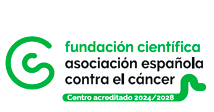Activity Detail
Seminar
Bridging basic science to application through advances in structural virology
Prof. David I. Stuart
 Structural virology encompasses methods that provide molecular or atomic-level information on viruses and their life-cycle. At present the foremost method for basic science discovery is cryoEM, especially the so-called single particle method. However until now it is the application of structural methods to sub-viral components that has had a major impact on the delivery of small molecule therapeutics, through the use of X-ray crystallography.
What are the future opportunities of taking other methods through to useful applications? For purified samples there are huge opportunities to map out virus receptor and virus-antibody interactions – not only with model systems but with patient data. Coupled with protein engineering this should facilitate the development of tools for diagnostics as well as therapeutic proteins and better vaccines. However for nearly all viruses most of their life cycle remains largely obscured, occurring in the complex and confusing cellular environment. This is surely where the biggest advances will come, especially through the application of cryo electron tomography (cyoET). There are massive challenges but if this method could be developed to the extent that 1 nm resolution could be routinely achieved in the infected cell, and if accurate 3D correlation could be achieved between cryoET and super resolution fluorescence microscopy then we would have a direct link between structural and cell biology that would revolutionise both. I will give a summary of some recent results that illustrate some of these threads.
Structural virology encompasses methods that provide molecular or atomic-level information on viruses and their life-cycle. At present the foremost method for basic science discovery is cryoEM, especially the so-called single particle method. However until now it is the application of structural methods to sub-viral components that has had a major impact on the delivery of small molecule therapeutics, through the use of X-ray crystallography.
What are the future opportunities of taking other methods through to useful applications? For purified samples there are huge opportunities to map out virus receptor and virus-antibody interactions – not only with model systems but with patient data. Coupled with protein engineering this should facilitate the development of tools for diagnostics as well as therapeutic proteins and better vaccines. However for nearly all viruses most of their life cycle remains largely obscured, occurring in the complex and confusing cellular environment. This is surely where the biggest advances will come, especially through the application of cryo electron tomography (cyoET). There are massive challenges but if this method could be developed to the extent that 1 nm resolution could be routinely achieved in the infected cell, and if accurate 3D correlation could be achieved between cryoET and super resolution fluorescence microscopy then we would have a direct link between structural and cell biology that would revolutionise both. I will give a summary of some recent results that illustrate some of these threads.





